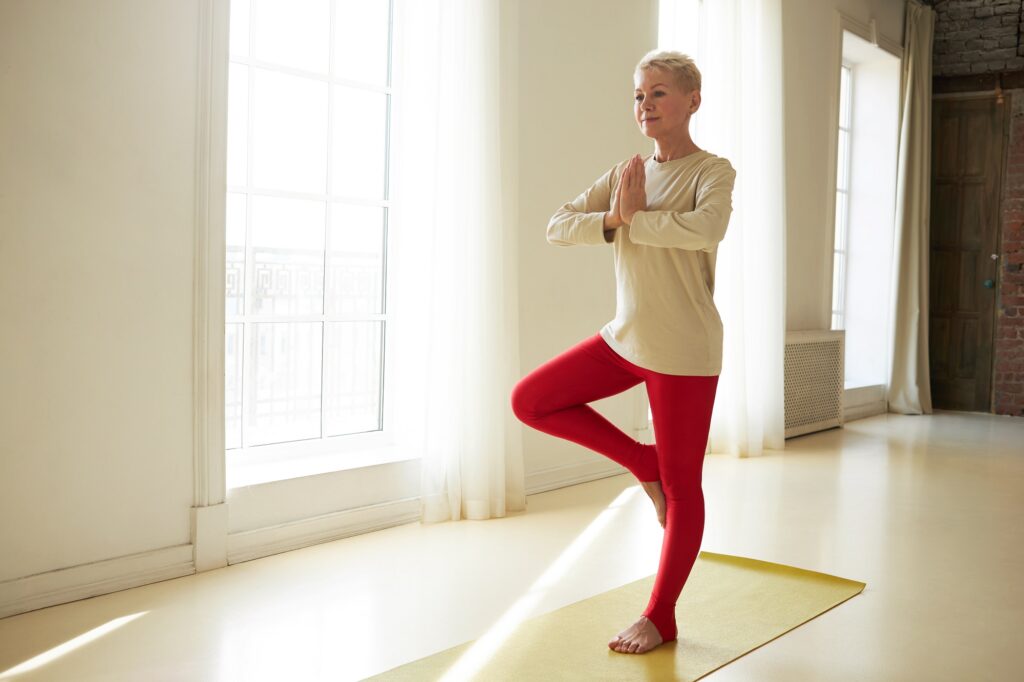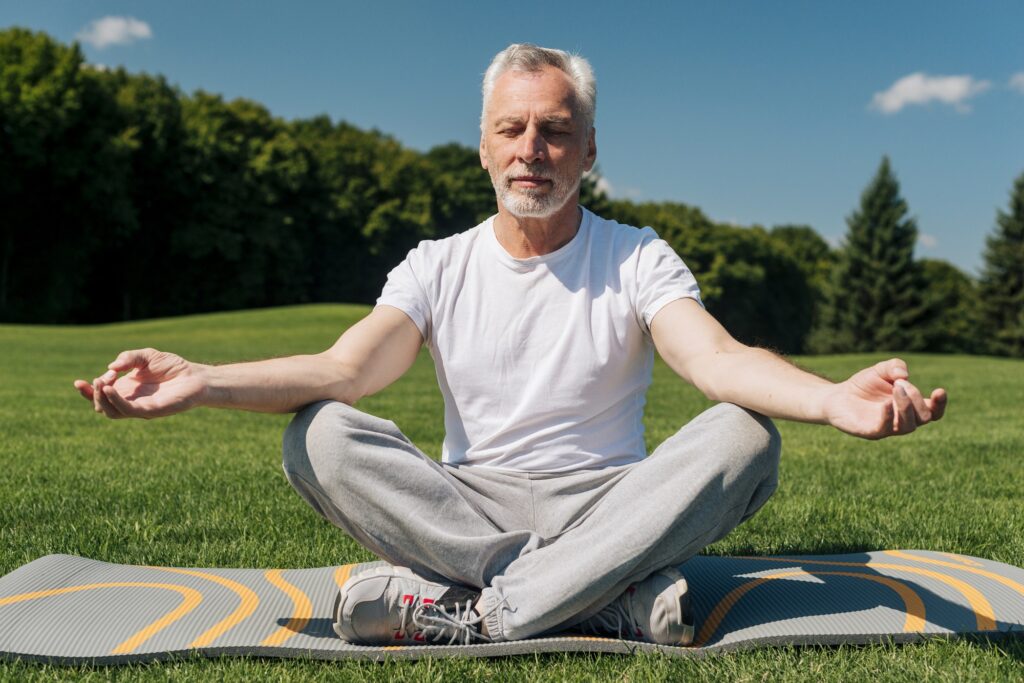Understanding Arthritis and Its Impact on Flexibility
Arthritis is a prevalent condition affecting millions worldwide, characterized by inflammation of the joints, resulting in pain, stiffness, and reduced mobility. It can significantly impact your quality of life, making everyday activities challenging. It can occur in various forms, such as osteoarthritis, rheumatoid arthritis, and psoriatic arthritis, each affecting mobility and flexibility.
The stiffness associated with arthritis often leads to a decrease in joint range of motion, which can limit participation in daily activities. Maintaining flexibility is important for managing arthritis symptoms, as it helps improve joint function, reduce pain, and support overall mobility, especially for individuals also managing conditions like diabetes.
Incorporating gentle movements, particularly through practices like yoga, can help manage these challenges. By understanding how arthritis affects flexibility, you can take proactive steps to maintain movement and stay active.
The Benefits of Gentle Yoga for Arthritis Sufferers

Gentle yoga is a low-impact exercise that combines physical postures, breathing techniques, and mindfulness to improve overall well-being. For arthritis sufferers, it offers multiple benefits, including pain relief, improved flexibility, and better mental health.
Gentle yoga is a low-impact exercise that combines physical postures, breathing techniques, and mindfulness to improve overall well-being. For arthritis sufferers, it offers multiple benefits, including pain relief, improved flexibility, and better mental health and supporting weight loss through consistent practice.
In addition to physical benefits, gentle yoga promotes relaxation and reduces stress. The meditative aspect of yoga encourages mindfulness, helping you manage arthritis with a more positive mindset.
Step-by-Step Guide to Each Yoga Move
Cat-Cow Pose (Marjaryasana-Bitilasana):
This gentle sequence increases spinal flexibility, stretches the neck and torso, improves posture, and helps reduce back pain, and supports overall health management in conditions such as fatty liver.
- Starting Position: Begin on your hands and knees in a tabletop position, ensuring your wrists are directly under your shoulders and knees under your hips.
- Cat Pose: Exhale as you round your back, tucking your chin to your chest and drawing your belly button towards your spine.
- Cow Pose: Inhale as you arch your back, lifting your head and tailbone towards the ceiling, allowing your belly to sink.
- Repeat: Flow smoothly between these poses for 5-10 breaths.
Child’s Pose (Balasana):
A restful posture that stretches the hips, thighs, and ankles while relieving tension and promoting calm.
- Starting Position: Kneel on the floor, touching your big toes together and sitting back on your heels.
- Stretching Forward: Exhale, folding forward and extending your arms in front of you, resting your forehead on the mat.
- Hold: Maintain this position for 5-10 breaths, relaxing your body with each exhale.
Mountain Pose (Tadasana):
Enhances posture and balance while strengthening the legs and improving body awareness.
- Starting Position: Stand with your feet hip-width apart, arms at your sides, and weight evenly distributed.
- Engage Core: Inhale deeply, drawing your navel in and lifting your chest.
- Alignment: Ground through your feet, elongate your spine, and roll your shoulders back.
- Hold: Maintain the pose for 5-10 breaths, focusing on balance and alignment.
Seated Forward Bend (Paschimottanasana):
This pose encourages a gentle stretch of the spine and hamstrings, improving flexibility and relieving tension.
- Starting Position: Sit with your legs extended in front of you, toes pointed towards the ceiling.
- Stretch Forward: Inhale, reaching your arms overhead, and exhale as you hinge at the hips, reaching towards your feet.
- Hold: Stay in the position for 5-10 breaths, allowing your spine to lengthen with each inhale.
Legs-Up-the-Wall Pose (Viparita Karani):
This pose reduces swelling and discomfort in the legs, promoting relaxation and improving circulation.
- Starting Position: Sit close to a wall and swing your legs up, resting them against the wall while lying on your back.
- Relax: Let your arms rest at your sides, palms facing up.
- Hold: Stay in this position for 5-10 minutes, breathing deeply and allowing gravity to support you.
Tips for Practicing Yoga Safely with Arthritis
Practicing yoga with arthritis requires mindful adjustments and attention to your body’s signals. Here are essential tips for a safe and effective practice:

- Listen to Your Body: Pay attention to any discomfort or pain, and avoid pushing beyond your limits. Modify poses to accommodate your condition.
- Use Props: Utilize yoga blocks, straps, and cushions to support your body and enhance comfort during poses.
- Warm Up: Always begin with a gentle warm-up to prepare your joints and muscles for movement, reducing the risk of injury.
- Focus on Alignment: Proper alignment is crucial for preventing strain on your joints. Consider working with a certified yoga instructor to ensure correct form.
- Practice Mindfulness: Incorporate breathing exercises and mindfulness techniques to maintain focus and relaxation throughout your practice.
By following these guidelines, you can maximize the benefits of yoga while minimizing the risk of exacerbating arthritis symptoms.
The Role of Mindfulness in Yoga for Arthritis
Mindfulness enhances the benefits of yoga for arthritis by focusing on the present moment, cultivating awareness, and accepting your current state without judgment. This practice helps you manage symptoms and improve quality of life.
Incorporating mindfulness into yoga makes you more attuned to your body’s signals, enabling you to notice discomfort early and move more mindfully, which reduces injury risk and boosts yoga’s therapeutic effects.
Additionally, mindfulness alleviates stress and anxiety linked to chronic pain. By fostering calm and acceptance, it strengthens mental resilience, helping you cope better with arthritis.
Conclusion
Embracing gentle yoga can be transformative for those living with arthritis. Through mindful movement and relaxation, you can enhance flexibility, reduce pain, and improve overall well-being. Yoga offers a holistic way to manage both the physical and mental aspects of arthritis.
Remember to listen to your body and be patient, as benefits develop over time with consistent practice. Integrating yoga into your routine can help you enjoy a more active, pain-free life with greater peace and fulfillment.